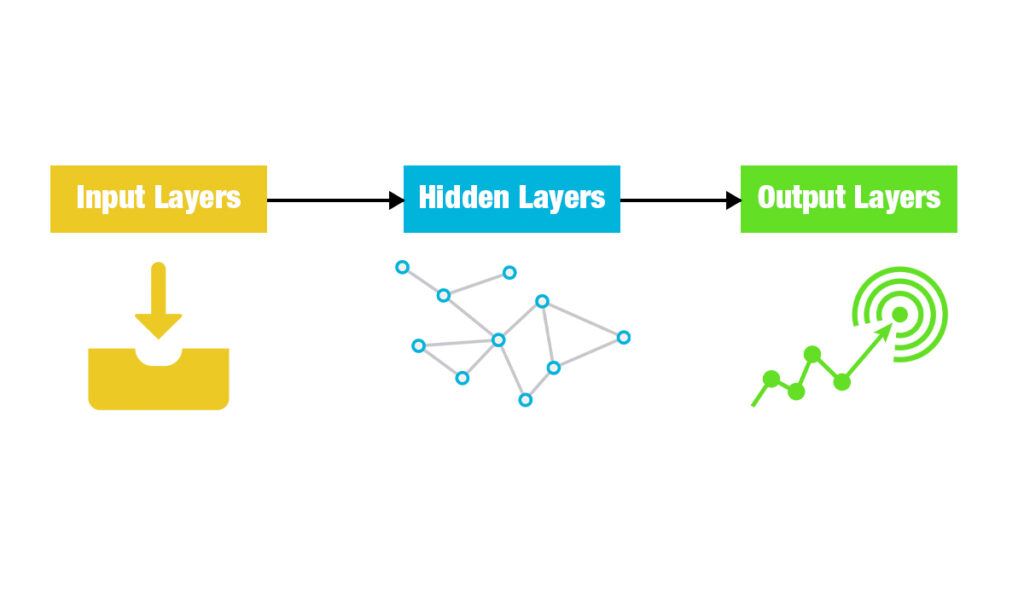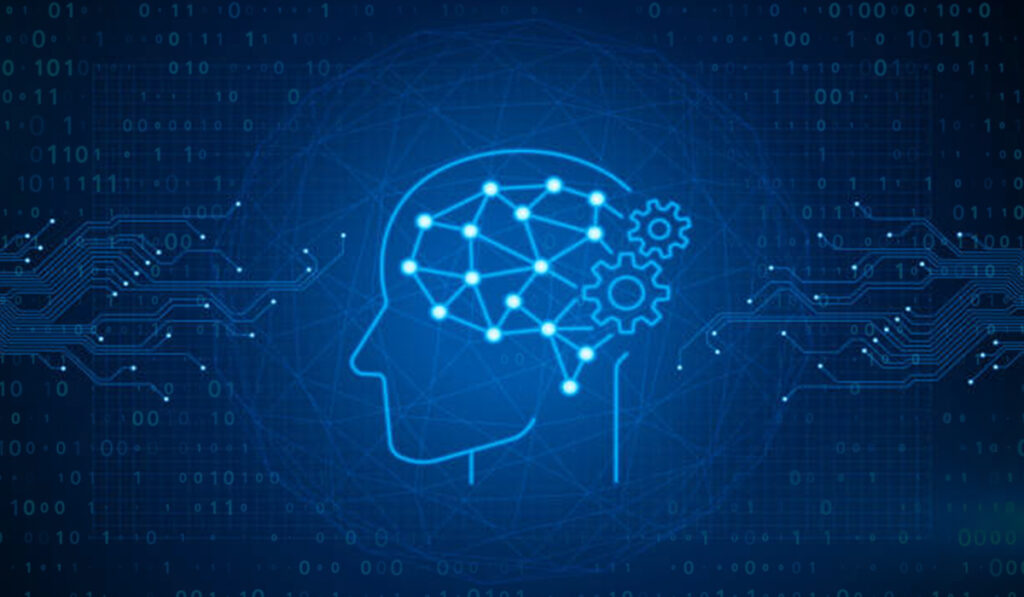Ever wondered how AI knows your face in a photo or guesses the next word you’re typing? Meet neural networks—AI’s version of a brain! They’re the behind-the-scenes hero making these feats possible.
But let’s be real: the term “neural network” sounds like something out of a science fiction movie and all the techy tech that makes your head spin. For beginners, these concepts often feel like solving a Rubik’s Cube blindfolded.
The neural networks don’t have to be intimidating. In this guide, we’ll break them down into bite-sized pieces that anyone can understand—yes, even if tech isn’t your strong suit. By the end, you’ll see how these virtual “brains” learn, think, and power the AI we interact with daily. Ready to unravel the mystery? Go while scroll
What is a Neural Network? Simplified
A neural network is like a digital brain for computers. It’s a type of algorithm (a set of rules) inspired by how the human brain works. Just like our brain uses neurons to learn and make decisions, a neural network uses layers of “nodes” to process information and come up with solutions. It’s the secret behind many AI tools, like those that can recognize faces, predict the weather, or even translate languages.
Let’s understand by simple real-life analogy:
Imagine you’re ordering a pizza. The process goes like this:
- Ingredients (Data): You give the pizza place your order—pepperoni, cheese, and olives.
- Process: The chef gathers the ingredients, assembles the pizza, and bakes it.
- Output (Result): Your delicious pizza is delivered, solving your hunger problem.
Now, think of a neural network doing the same thing:
- Input (Data): It receives information, like a photo or numbers.
- Processing: It analyzes and rearranges the data through layers of connected nodes.
- Output: It delivers a result, like identifying a face or predicting tomorrow’s temperature.
Just like the pizza delivery system designed in the way you get what you ordered; a neural network processes data to meet its goal.
Understanding the basics of neural networks is the first step to exploring AI magic. Neural networks might sound complex, but once you see them as problem-solving tools, it’s like uncovering the magic behind how AI thinks and learns.
How Neural Networks Work: A Layman’s Guide
Neural networks can sound complicated, but at their core, they follow a simple process. Let’s break it down step-by-step using a pizza analogy that everyone can relate to:
1. Input Layer: Where It All Starts
The input layer is the starting point of a neural network. This is where data enters the system.
You are ordering a pizza. The ingredients—flour, cheese, pepperoni—represent your input. In AI, this could be a picture, some text, or numbers, depending on the task.
2. Hidden Layers: The Processing Stage
This is where the magic happens! Hidden layers are where the neural network processes the input data by performing complex calculations and finding patterns.
In our pizza example, this is like the chef mixing the dough, spreading the sauce, adding toppings, and baking the pizza. It’s all behind-the-scenes work to get the perfect result. In a neural network, the layers “mix and match” data to make sense of it.
3. Output Layer: The Final Decision
The output layer is where the neural network gives its result. This could be a prediction, a classification, or an answer to your question.
The output is your delicious, ready-to-eat pizza delivered to your door. In AI, it might be recognizing that a picture contains a cat or predicting tomorrow’s weather.

4. Weights and Biases: Fine-Tuning the Recipe
Weights and biases are adjustments the neural network makes to improve accuracy.
Suppose your first pizza wasn’t cheesy enough. The chef tweaks the recipe next time to add more cheese or less sauce. In a neural network, weights and biases are adjusted during training to ensure better predictions or decisions.
Understanding these basic steps makes neural networks less intimidating. They’re just problem-solving systems that learn from data to make better decisions—like perfecting a recipe. So let have a look on the types of the neural networka
Types of Neural Networks and Their Uses Explained
Neural networks are the foundation of modern AI, mimicking how our brains process information. Let’s break down the key types, their unique abilities, and where you might encounter them in daily life:
1. Feedforward Neural Networks (FNNs)
The simplest type of neural network where data flows in one direction—from input to output—without looping back.
The work in the way that a straight road: data enters on one end, gets processed through layers of neurons, and pops out as a result. They are used in:
- Recognizing handwritten digits, like reading postal codes on mail.
- Predicting simple patterns in structured data.
This type of neural network like the “starter kit” for neural networks, lays the groundwork for more advanced types.
2. Convolutional Neural Networks (CNNs)
A specialized type of network designed for working with images.They scan images in small patches (called kernels) to detect patterns like edges, colors, or textures. These patterns are combined to understand the whole image.
Where Are They Used?
- Facial recognition (e.g., tagging friends in photos).
- Medical imaging (e.g., identifying tumors in X-rays).
- Self-driving cars (e.g., detecting stop signs or pedestrians).
CNNs are behind the AI magic in anything visual—turning pixels into actionable insights.
3. Recurrent Neural Networks (RNNs)
Networks are designed to process sequential data by remembering past information. They loop data back into the system, like a storyteller recalling previous events to build the next chapter. These are used in the following:
- Predicting the next word in a text message (e.g., autocomplete).
- Generating subtitles for videos.
- Analyzing time-series data (e.g., stock market trends).
They add a sense of “memory” to AI, making it ideal for tasks involving time or sequence.
4. Transformers
The powerhouse networks revolution AI with their ability to process massive amounts of data efficiently. Unlike RNNs, transformers don’t process data step by step. Instead, they look at all parts of the input simultaneously (parallel processing), focusing on the most relevant parts using something called “attention mechanisms.”
Where Are They Used?
- Language models like ChatGPT and Google Translate.
- Image generation tools (e.g., creating art from text prompts).
- Scientific research, like protein folding or drug discovery.
Transformers are cutting-edge, powering the latest breakthroughs in AI, from natural language to scientific discovery. These models are behind the most exciting advances in AI today, from chatbots like ChatGPT to groundbreaking research in science. Ignoring transformers is like skipping the main act in a concert!
5. Generative Adversarial Networks (GANs)
Two networks battling each other: one creates data, and the other critiques it until the result is as realistic as possible. This could be imagine an artist trying to draw a picture and a critic pointing out flaws. Over time, the artist gets better until the critic can’t tell it’s fake. The help in:
- Creating realistic deepfake videos.
- Generating art or virtual environments.
- Upscaling low-resolution images.
GANs are the creative brains behind AI, enabling machines to “imagine” and produce new content.
6. Autoencoders
Networks designed to compress data into smaller representations and then reconstruct it back to the original. They act like a zip file: shrinking data to its core essentials and unzipping it when needed.
They help to removing noise from photos or audio. Not this, also use in Detecting anomalies, like fraud in transactions. Dimensionality reduction for complex datasets.
Autoencoders simplify and clean data, making it easier for other AI systems to use.
7. Modular Neural Networks
Networks that break tasks into smaller, specialized modules, each handling a piece of the problem.
This is like a team of specialists, each focusing on their expertise, then combining results. Used as:
- Complex systems like robotics (e.g., controlling different parts of a robot).
- Autonomous vehicles (e.g., separating tasks like object detection and route planning).
They’re efficient, tackling complex problems by breaking them into manageable pieces.
Common Myths About Neural Networks (Debunked!)
Neural networks are fascinating, but there’s a lot of confusion surrounding them. Let’s tackle some of the biggest myths and set the record straight:
1. “Neural networks think like humans.”
- Truth: Neural networks don’t “think” or “understand” like humans do.
- They’re just powerful mathematical models that process data, recognize patterns, and make predictions.
- Imagine them as super-smart calculators—not mini-human brains!
2. “They’re too complex for beginners.”
- Truth: While the term neural networks might sound intimidating, the basics are easy to grasp.
- Think of them as a series of steps where data goes in, gets processed, and comes out with results.
- With simple explanations (like this guide!), you’ll realize neural networks are more approachable than you thought.
3. “You need a PhD to learn this.”
- Truth: You don’t need to be a rocket scientist to dive into neural networks.
- Tools like TensorFlow and PyTorch provide beginner-friendly ways to build and experiment with neural networks.
- Plus, there are countless tutorials, videos, and resources online to guide you step by step.
Practical Applications of Neural Networks
Neural networks have transitioned from being theoretical concepts to driving real-world innovations across diverse fields. Here’s a look at their most impactful applications:
1. Healthcare: Diagnosing with Precision
Neural networks are revolutionizing the medical field by enabling:
- Disease Diagnosis: Tools like AI-based imaging systems analyze medical scans (e.g., X-rays, MRIs) to detect conditions such as cancer, heart disease, and neurological disorders with remarkable accuracy.
- Drug Discovery: Neural networks accelerate the process of finding potential drug candidates by analyzing vast datasets of molecular structures.
- Personalized Medicine: By understanding patient data, neural networks help tailor treatments that best suit an individual’s genetic makeup.
Example: Google’s DeepMind uses neural networks for early detection of eye diseases.
2. Finance: Securing Transactions and Investments
Neural networks are the backbone of many financial innovations:
- Fraud Detection: By analyzing transaction patterns, they flag suspicious activities in real time, preventing potential losses.
- Stock Market Predictions: Neural networks identify trends and patterns in financial markets, aiding investors in making informed decisions.
- Credit Scoring: They evaluate borrower risk more comprehensively, improving loan approval processes.
Example: Mastercard employs neural networks to detect and prevent fraud globally.
3. Entertainment: Curating Your Preferences
Neural networks are enhancing the entertainment experience:
- Content Recommendations: Platforms like Netflix and Spotify use neural networks to analyze user behavior and suggest shows, movies, or songs tailored to individual tastes.
- AI-Generated Content: Neural networks can create music, videos, and scripts, opening up new dimensions in storytelling and art.
Example: Spotify’s recommendation algorithm is driven by recurrent neural networks to predict and cater to user preferences.
4. Retail and E-commerce: Enhancing the Shopping Experience
Retailers leverage neural networks to:
- Personalize Recommendations: Suggest products based on browsing history, purchase behavior, and preferences.
- Optimize Inventory Management: Forecast demand and manage stock levels efficiently.
- Chatbots and Virtual Assistants: Provide real-time assistance to customers, improving satisfaction and retention.
Example: Amazon’s “Customers who bought this also bought” feature is powered by neural networks.
5. Transportation: Driving Autonomy
Neural networks are integral to the development of smart transportation systems:
- Self-Driving Cars: They process data from sensors, cameras, and maps to navigate roads safely.
- Flight Optimization: Airlines use neural networks to optimize fuel consumption and flight routes.
- Traffic Management: Neural networks analyze traffic flow to reduce congestion and improve urban mobility.
Example: Tesla’s Autopilot uses convolutional neural networks (CNNs) for image recognition and navigation.
6. AI Art Generators: Creativity Meets Algorithms
Neural networks are unlocking new realms in creativity:
- AI-Powered Art: Generative Adversarial Networks (GANs) create stunning visual art pieces and digital illustrations.
- Interactive Design Tools: Neural networks help artists visualize concepts and generate creative drafts.
Example: Tools like DeepArt and Runway AI use neural networks to produce AI-generated artwork.
7. Manufacturing and Industry: Smart Operations
In industrial applications, neural networks drive:
- Predictive Maintenance: Identifying equipment issues before they occur to minimize downtime.
- Quality Control: Using image recognition to detect defects in products on assembly lines.
- Robotics: Neural networks power intelligent robots for assembly, sorting, and packaging tasks.
Example: Siemens uses neural networks for efficient industrial automation.
Now, how cool is that? From hospitals to Hollywood, neural networks are doing it all—and this is just the beginning!
Building Your First Neural Network: A Beginner-Friendly Guide
Creating a neural network might sound complicated, but it’s easier than you think! Let’s break it down step by step.
1. Choose a Platform: TensorFlow, PyTorch, or Keras
Neural networks require a platform or library to build and train models.
- TensorFlow – Developed by Google, TensorFlow is widely used for deep learning. It’s powerful but may have a steeper learning curve.
- PyTorch – Created by Facebook, PyTorch is more beginner-friendly and flexible, making it popular for research and projects.
- Keras – Keras is like the “easy mode” of AI. It simplifies the process by allowing you to build models with fewer lines of code. Plus, it works with TensorFlow!
👉 For beginners – Start with Keras because it’s intuitive and lets you focus on learning concepts without getting lost in complex code.
2. Pick a Dataset: MNIST (Handwritten Digits)
Before you train your neural network, you need data to teach it.
- Why MNIST? – The MNIST dataset contains 70,000 images of handwritten digits (0-9). It’s small, easy to understand, and widely used to practice building AI models.
- How It Works – Your neural network learns to recognize digits by studying thousands of labeled examples, allowing it to predict numbers from new images.
👉 Tip – MNIST is the “hello world” of neural networks. It’s simple, visual, and great for beginners to see results quickly.
3. Train the Model: Step-by-Step Process
Training a neural network involves feeding data through the model and adjusting it to improve accuracy.
- Step 1 – Load your dataset (like MNIST).
- Step 2 – Define the model’s layers. These layers process and learn from the data.
- Step 3 – Train the model by passing data through and letting it adjust based on its mistakes.
- Step 4 – Repeat the process until the model achieves high accuracy.
👉 Think of it like teaching a child to recognize numbers – practice makes perfect!
4. Evaluate Performance: Does the Model Work?
Once your model is trained, you need to check if it works on new data.
- Accuracy – How often does the model guess correctly?
- Loss – A low loss means the model makes fewer mistakes.
- Confusion Matrix – This tool shows how often the model confuses one digit with another.
👉 Pro Tip – Don’t stress if your model isn’t perfect. Improving accuracy is part of the fu
Neural Network Trends to Watch
1. Green AI: Energy-Efficient Neural Networks
Neural networks can consume a lot of energy during training, but Green AI focuses on making them more eco-friendly.
- Trend – Developers are creating lighter models that use less computational power, reducing carbon footprints.
👉 Why It Matters – AI that saves energy helps fight climate change!
2. Neural Networks for Non-Techies: No-Code AI Platforms
No-code platforms like Runway ML allow anyone to build AI models without programming.
- How It Works – Users drag and drop blocks to create AI projects.
- Why It’s Big – It opens the door for artists, marketers, and teachers to use AI without learning to code.
👉 Try It Out – Experiment with Runway ML and see how easy AI can be!
3. Integration with IoT: Smart Homes & Autonomous Vehicles
Neural networks are being integrated into IoT devices, making smart homes and self-driving cars smarter.
- Example – AI-powered thermostats learn your preferences, while autonomous vehicles process real-time data to navigate roads.
👉 The Future – AI and IoT will make daily life more convenient and efficient.
Conclusion: From Beginner to Neural Network Navigator
Neural networks may seem complex at first, but with the right tools and practice, anyone can start building them. They’re shaping the future across industries – from healthcare to gaming. Ready to take the next step? Check out our beginner’s guide to machine learning and unlock your AI potential!


